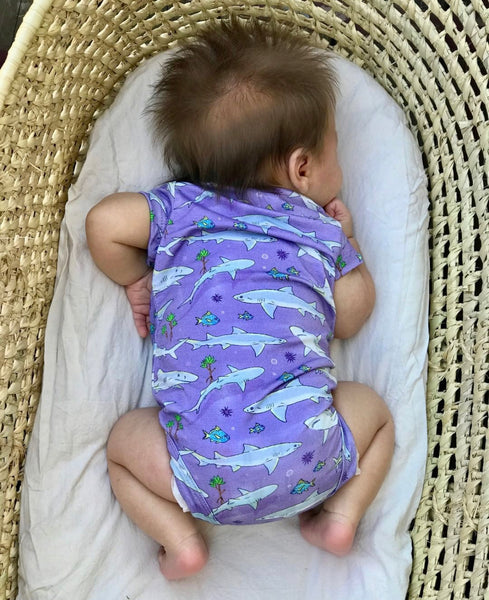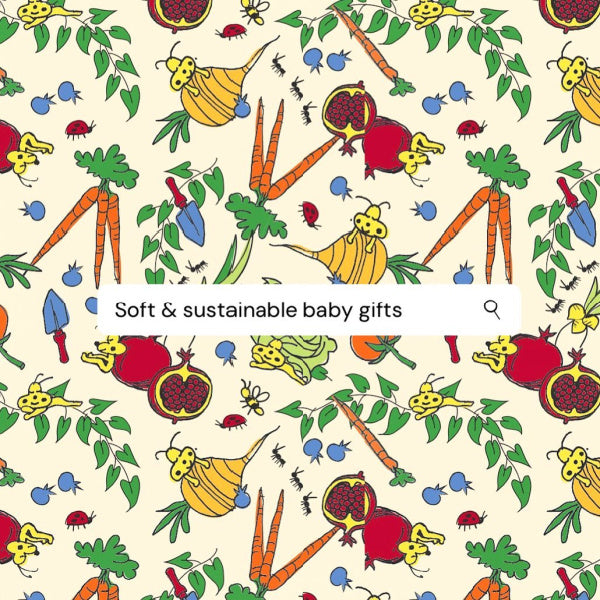Photography courtesy of Lucky Bug Clothing
For decades now, parents have invested time and money into almost everything that went into feeding and caring better for their children, from organic food and chemical-free lotions to thoughtfully designed games and toys created to spark creativity and imagination; all of these and so much more were the focus of attention.
Yet until very recently, for many parents their children’s clothing purchases have been more about fabric and aesthetic choices (and sales!) than underlying source and production considerations, many of which were not understood or in the spotlight for consumers.
That has begun to change, however.
A report published in the journal Nature Reviews Earth & Environment documents the environmental costs of fashion. Meanwhile, an Intergovernmental Panel on Climate Change (IPCC) has found that the fashion industry produces 10% of global carbon dioxide emissions every year, uses 1.5 trillion liters of water, and contaminates oceans with microplastics. There’s also the matter of child labor; an estimated 170 million children are employed in work that the U.N. defines as “work for which the child is either too young — work done below the required minimum age — or work which, because of its detrimental nature or conditions, is altogether considered unacceptable for children and is prohibited.” (It is unclear how large the proportion of that is devoted to fashion, but it is certainly part of the equation).
Thankfully, plugged-in companies like Lucky Bug Clothing have been quietly producing children’s wear that not only appeals to our superficial instincts (lots of fun colors and cool patterns, please!) but also takes into account our deeper sustainability, societal, and green chemistry concerns. Please read on for insight from Lucky Bug’s COO, Eva Hayes.
NEW YORK MAKERS: I love your line of children’s clothing. And I know your family is involved. Can you tell me how it came into being?
EVA HAYES: As an undergraduate at Northeastern studying Marine Biology, I was becoming more and more alarmed as I learned about the number of microplastics polluting our waterways. I knew a lot of this had to do with the fashion industry. Then in 2015, my family took in a foster baby. And we had other babies in our lives too, members of our family, and children of friends. It was a wonderful time, and we wanted to create something for all of them. My brother Samuel is an incredible artist, and we thought it would be cute if we sewed sustainable clothes with his designs on them. Samuel, my mom Robin, and I worked together on the designs; it was fun, and the feedback from the parents was amazing. They loved our designs, and they were getting compliments everywhere they went. We realized there could be something to this. When I graduated [from college] in 2016, we started sourcing sustainable clothing, and figuring out an ethical and as-local-as-possible production chain.

Left to right: Eva, Samuel, and Robin Hayes
NYM: What is your clothing made out of?
EH: We make all of our clothes from Oeko-Tex certified Lyocell Bamboo jersey. We find it’s not only safe for the environment, it’s soft and stretchy, which babies and children love. We use non-toxic dyes that are water-based. It’s important to us that we make clothing that is sustainable, comfortable, ethical, and cute. It seems simple, but when you start looking into sourcing, it’s more complicated.
NYM: Tell me about that. Who actually makes the clothing, and where?
EH: We’re really proud of our production process. Our fabric is milled and printed by a small company in L.A. Our friends referred us to a family who can sew clothes on a semi-large scale early on. They’re in a boutique factory building right near Roberta’s Pizza in Brooklyn. I love going to visit them! We were their first line of children’s clothes, but it’s great as a family business to support another family business, and that’s exactly what they are. We personally know every company involved in the process of making our clothes, and we know that their teams are being cared for and paid properly. And because we’re so anti-plastic, we eliminate it all across our manufacturing and shipping process as well, and we’ve removed plastic from the hangtag and anywhere else we found it.

NYM: What is the design process like and how do you decide who does what?
EH: My brother is definitely the artist of the bunch, but all three of us collaborate on the design. Together, we work out the shapes and styles of each look. Other than that, we all fell into roles naturally based on our skill sets. I’m obsessed with sourcing and handling wholesale accounts, customer service, photography, and making sure we have all of our most current SKUs listed on our website. My brother handles the site’s graphic design. My mom handles the business back-end, she makes sure our bills and invoices are paid.

NYM: How much have you grown, and how much would you like to grow?
EH: Our growth has been slow and steady, and that’s how we designed it to be, so that we could maintain our integrity. We started out direct-to-consumer with just our website, but now we have 16 retail wholesalers and five drop-ship wholesalers. I’m in L.A. right now, exploring retail and pop-up options. We love New York, but, ultimately, we’d love to have a strong bicoastal business presence with customers all over. But we’re mindful of growth. It’s always struck me as the ultimate irony of children’s wear that they’re sometimes made by children in unsafe and even toxic conditions.

NYM: Would you ever consider designing for older kids?
EH: We’ve already expanded our line from 2T to 5T, and some of our customers are still squeezing into our clothes at 7 and 8 because they love them so much. Plus, we get requests all the time from adults who want the same designs on clothes they can wear. So, yes. We are absolutely working on expanding the line.
When the time comes, we will absolutely be ordering summer rose twirl dresses for ourselves!


Leave a comment